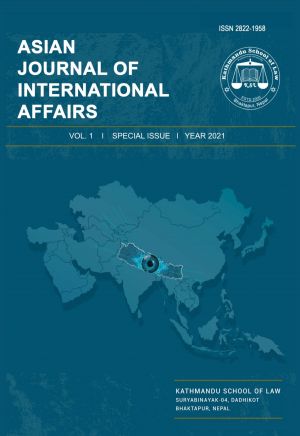Governance, Democracy and Inclusion in the Perspective of Nepal
DOI:
https://doi.org/10.3126/ajia.v1i1.44754Keywords:
Democracy, Governance, Inclusion, Proportional representationAbstract
Proportional representation is more effective in terms of inclusive governance. The constitution of Nepal, adopted in 2015, has largely implemented it. Quotas are reserved in different sector of the state. Despite this, various factions within Nepali society are still in movement in different form. There are two genuine questions in this context. Are the constitutional provisions appropriate? What are the challenges in the paths of inclusive governance? The objectives of this paper are to examine Nepal’s existing practices of inclusion in the governing process, and the challenges of inclusive democracy from a Nepali perspective. The descriptive research design was adopted in this paper. Secondary sources were used to acquire the information. In addition, the KSL comprehensive guideline was followed to prepare this paper. The conclusion of this paper is that the country faces numerous challenges in implementing inclusive governance, like the movement of concerning republicanism, secularism, federalism and inclusion. Nevertheless, federalism, republicanism, secularism and inclusions are crucial requirements for sustainable peace. Obviously, the PR model of representation in each state organ ensures that all sections are represented.
Downloads
Downloads
Published
How to Cite
Issue
Section
License
© Kathmandu School of Law and Author/s
No part of the publication shall be reproduced or transmitted in any form by any means, electronic or mechanical- including photocopying, recording, or any information storage or retrieval system- for commercial purposes without written permission from the copyright holder. Readers are, however, encouraged to quote or reproduce material from this journal with due acknowledgement to the author/s and AJIA for academic purposes.




